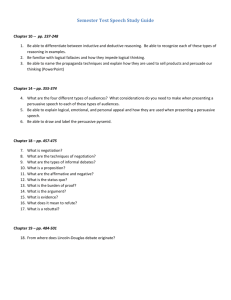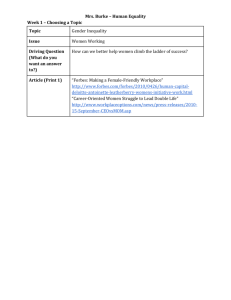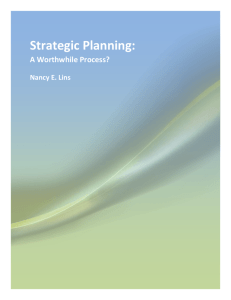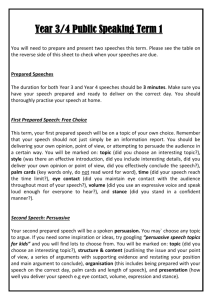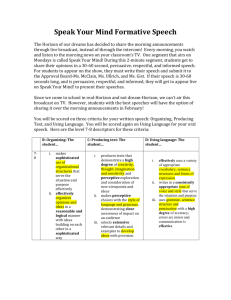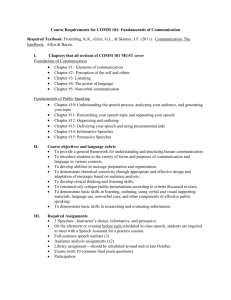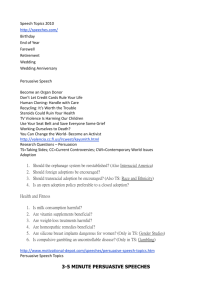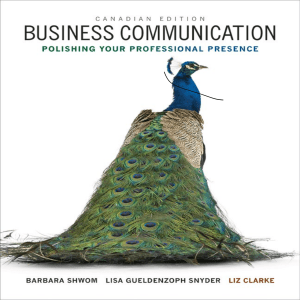PCM 340 Informative vs. Persuasive Speeches Powerpoint
advertisement
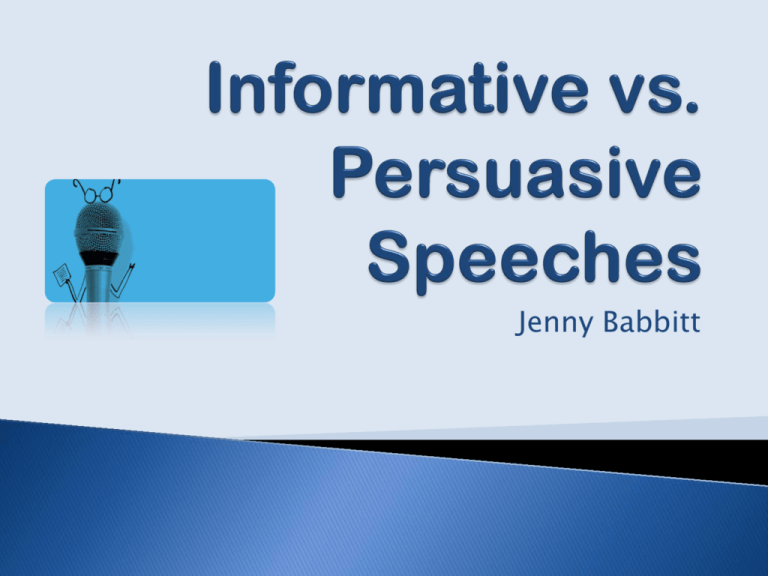
Jenny Babbitt HISTORIC SPEECHES “I Have a Dream” “Gettysburg Address” Inaugural Speech “Informative speeches can provide new and unfamiliar information, extend what the audience already knows, or update old information about a topic or issue.” (Communicating For Results A Guide for Business and the Profession, 2014) ORAL BRIEFING Summary of Facts Under 15 Minutes Formal & Informal Example: Weekly staff meeting ORAL REPORT Details of Facts 20 Minutes Formal Examples: Feasibility Report, Progress Report or Proposal Size of Audience? Mandatory vs. Choice? Who are they? What do they know? Are they familiar with you? Negative biases? 1. FOUR TYPES OF AUDIENCES Friendly 2. Neutral 3. Uninterested 4. Hostile 1. What do you want accomplished? 2. What will the audience take away? 3. What do you want the audience to do with that information? Diversity in the Workplace Healthcare Costs Mars Exploration Telecommuting – Pros and Cons Job seeking on the Internet Why? What to search for? Where to search? TOPICAL PATTERN Most Popular Easiest Most to Least important, known to unknown, familiar to unfamiliar SPATIAL PATTERN AKA Geographical Organizes points on spatial location. Front to rear, bottom to top, left to right. Ex. Layout of a manufacturing plant CHRONOLOGICAL PATTERN Present in order of ocurrence. Ex. Historical Event CAUSAL PATTERN Cause & Effect relationship. Ex. Extemporaneously Use of Visual Aids Memorizing Speaking from a Manuscript “Persuasive speeches are done primarily to advocate some sort of change in attitudes, beliefs, or behaviors. (Business & Professional Communicating in a Digital Age, 2013) Identify Opinion Leaders Show how you will fulfill your audiences needs. DETERMINE WANTED REACTION Reinforce current belief Inspire agreement Request specific action Trustworthiness Competency Dynamism Objectivity Variety of supporting materials Clarify Add Interest Support your arguments CLAIM/REASONS PATTERN Inductive reasoning Deductive reasoning CAUSAL PATTERN Cause / Effect reasoning Solution Step Action Step PROBLEM – SOLUTION PATTERN Problem – solution – benefits Problem – solution - action COMPARATIVE ADVANTAGES PATTERN Audience agrees on the problem Audience disagrees on the solution CRITERIA SATISFACTION PATTERN Establish Criteria Show your plan THE MOTIVATED SEQUENCE Attention Step Need Step Satisfaction Step Visualization Step Action Step Introduction Body Conclusion Honest Influence Give your audience a choice DO Manipulate Coerce Force DON’T Rehearse Record Repeat Audience Analysis Purpose Research Organization Competency of Delivery SIMILARITIES DIFFERENCES INFORMATIVE PERSUASIVE Hamilton, C. (2014) Communicating for Results A Guide for Business and the Professions. (10th ed.) Boston, MA: Wadsworth Cengage Learning. Waldeck, J., Kearney, P., & Plax, T. (2013) Business and Professional Communicating in a Digital Age. Boston, MA: Wadsworth Cengage Learning. Morgan, N. (Nov. 4, 2014) The Greatest American Speeches – Ever? Forbes. Retrieved from http://www.forbes.com/sites/nickmorgan/2014/11/04/thegreatest-american-speeches-ever Frankel, A. (Retrieved June 8, 2015) 6 Tips for Writing a Persuasive Speech (On Any Topic). Time. Retrieved from http://time.com/3664739/6-tips-for-writing-apersuasive-speech-on-any-topic Neill, C. (Feb. 23, 2015) How To Deliver Persuasive Presentations. Forbes. Retrieved from http://www.forbes.com/sites/iese/2015/02/23how-todeliver-persuasive-presentations

